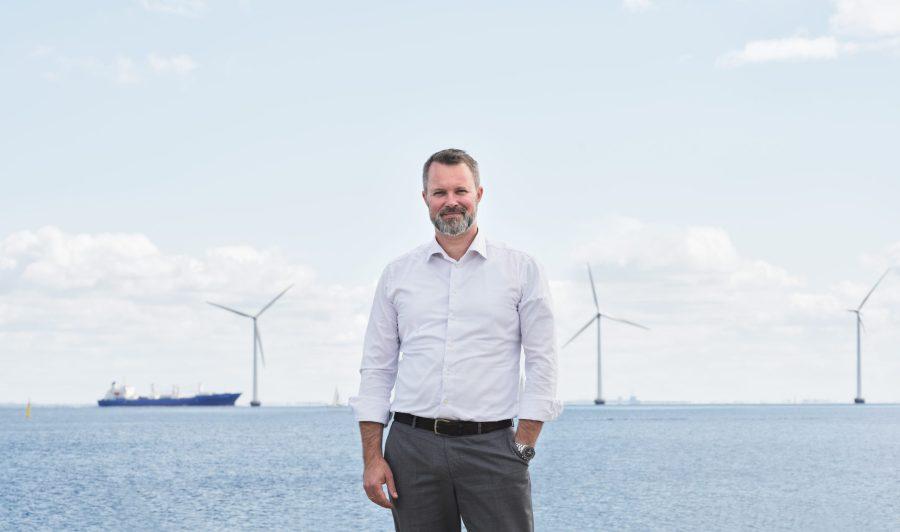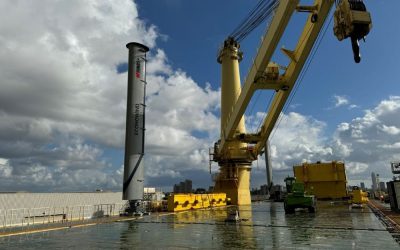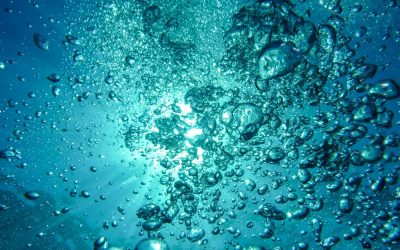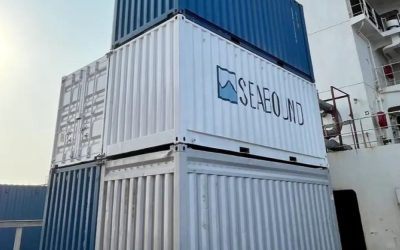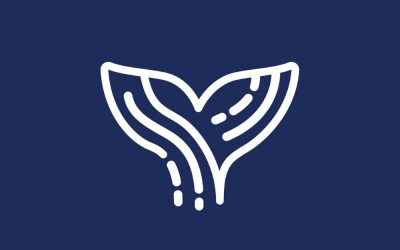Ship logbooks have long been a ubiquitous feature on the bridge of all vessels big and small. These tomes have always been kept judiciously to include any and all-important events that a ship should run into. It’s generally been accepted that a captain and crew will keep this up to the best of their ability so that this can be reported back once they reach port. For many years there has been little reason to change this process.
Nevertheless, a rapidly changing climate and increasing pressure on shipowners and operators to modernise reporting systems, particularly in regard to new CII regulations, means that a more up to date process is needed. Gone are the days when ships can go for days on a trans-ocean voyage without communications with shore. Now it is necessary for a more streamlined system of interaction between crew and land-based support teams to exist. However, current solutions rely on ship operators installing multiple different technology packages.
StormGeo, a well-established company in the field of weather routing, hopes to provide a fully integrated system. The organisation, which recently celebrated its 25th anniversary, has been rapidly expanding what it can offer to customers to include an integrated solution for logbook reporting, weather forecasting and environmental compliance. The company’s s-Suite, which was launched in 2020, incorporates several different features that allow a ship’s crew to monitor vessel performance and rapidly communicate with shore. s-Suite is made up of several modules which can be installed together or individually alongside third-party software.
“We help ships navigate and be safe and efficient at the same time. We can work with really with any source that’s available,” says Soren Anderssen, CEO of StormGeo, speaking to TNA at Nor-Shipping 2023. “Ten years ago, those data sources were almost all noon reports from the crew. They’re reporting a lot of things that the owner or the operator of the ship wants, a lot of manual data. Today that’s still a significance share. The way it’s reported though, is intelligent. It’s not just a random email,” he continues.
Rapid verification
s-Suite is a reporting tool that enables rapid verification of the information coming into it meaning crews and shore personnel have access to correct data. Up until now most of this has still been manual. However, as connectivity costs are decreasing a much larger proportion has been high-frequency automated data. This means systems need to be more streamlined and efficient as a result. Currently the company has 13,000 ships using the s-Suite platform. Coupled with 10,000 daily users in support roles on land.
The field of digital logbook collection and noon reporting has been rapidly growing in recent years with several other companies taking steps to build their own systems. Recently, NYK Group announced that it would be launching its own logbook system, the EL-100. Ferry company Finnlines, based in the Baltic, has signed an agreement with NAPA, the maritime software and data solutions provider, for the use of the latter’s electronic logbooks technology.
Rewiring the machine
Despite the growing competition StormGeo believes it benefits from many years of experience in the field of vessel data reporting. As a result, the company says it can draw from a greater level of experience than many of its rivals. “We were born before big data was really a thing. Nowadays, it’s all about big data and algorithms, and we’ve matured with that,” says Anderssen. “We are rewiring the machine and making it more efficient. I think my competitors are spending a lot of time on actually building the knowledge that’s required because it’s not a simple thing.”
In 12 months StormGeo has expanded its s-Suite of reporting technology to include tools for CII data collection and validation. This allows shipowners access to data that will recommend how they can improve their vessels’ CII rating and forecast upcoming data in following months. An increase in the variety of fuels also presents a challenge for the industry which the company has placed itself in the running to cater for. “This changes the optimal way to operate the ship. So things are going to get a lot more complex for the industry, and that means that our tools need to be a lot better so we can cater for all these different kind of scenarios,” states Anderssen.
An increase in high-frequency data collection due to lower connectivity costs will be the next big challenge for vessel reporting. This presents a question of how this data can be used which will likely mean fewer crew onboard to monitor and maintain the vessel. As a result, teams on shore will need more specialised support and more efficient communication technology. Communicating and educating seafarers in this rapidly changing world is also key.
“There’s a whole huge task in front of us in educating our seafarers because they need now to be generalists, in a sense, guided by the shore. They’re going to be facing a lot more variation as well when it comes to fuel. So we need to consider how do we do that? It will take some years [to find a solution] but fortunately I think that the products are entering the market and the satellites are there to an increasing extent so all the right moves are being made,” notes Anderssen.
Future expansion
Providing a future-proof system is core to StormGeo’s strategy for expansion in the face of a rapidly changing market. StormGeo is currently working on a road map for future expansion based on the data it is already receiving from its new systems. “Part of this is maintenance,” says Anderssen, “making sure that the system is solid, that cybersecurity is high. That’s a constant prioritisation that we are doing. Do we launch the next big product now, or do we spend more time on maintaining what we have already?”
Anderssen is optimistic about prospects for the industry going forward. Recent IMO regulations will ultimately drive new technological advances, and StormGeo aims to help collaborate with smaller startups. “Even though the tool is imperfect, it drives the right behaviour, and that I can see is creating innovation. The partnerships will happen by themselves. We just need the impetus, the push to go,” he adds.
